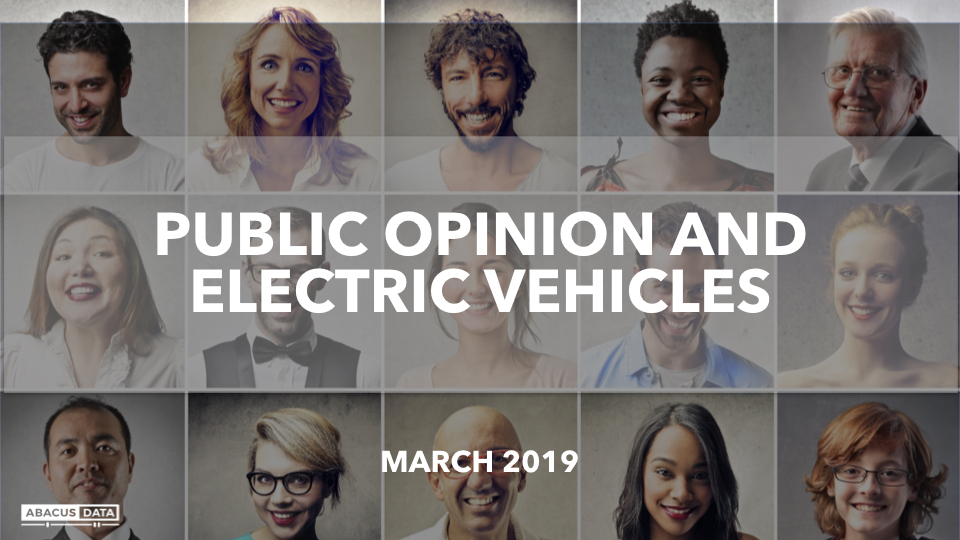Why Are Fewer Canadians Buying Electric Vehicles?

Table of Contents
High Purchase Price and Limited Affordability
The primary obstacle to widespread EV adoption in Canada is the high upfront cost. This significant price difference compared to gasoline-powered vehicles creates a substantial barrier, particularly for budget-conscious consumers.
The Cost Barrier
- Steep Initial Investment: EVs generally command a higher purchase price, often thousands of dollars more than comparable gasoline cars. This initial investment can be prohibitive for many Canadians.
- Insufficient Government Incentives: While the Canadian government offers various incentives like rebates and tax credits to encourage EV adoption, these often fall short of bridging the entire cost gap. Many find the remaining price difference still too substantial.
- Long-Term Savings Often Overlooked: The long-term cost savings associated with lower fuel and maintenance expenses are not always immediately apparent or persuasive to potential buyers. The upfront cost looms large, overshadowing future savings.
- Financing Hurdles: Access to financing options specifically tailored for EVs remains limited. Traditional auto loans may not adequately account for the unique aspects of EV ownership, potentially discouraging purchases.
Battery Technology and Depreciation
A considerable portion of an EV's cost stems from its battery. Concerns surrounding battery lifespan, performance degradation, and replacement costs further impact affordability.
- Battery Replacement Costs: Uncertainty about the cost of replacing an EV battery, especially after the warranty expires, adds a layer of financial risk for potential buyers.
- Depreciation Concerns: The resale value of used EVs can be unpredictable, influencing consumer perception of the overall cost of ownership. This uncertainty, compounded by the limited supply of used EVs, contributes to purchase hesitancy.
Inadequate Charging Infrastructure and Range Anxiety
Range anxiety – the fear of running out of battery power before reaching a charging station – is a significant factor deterring potential EV buyers. This fear is fueled by the inadequate charging infrastructure across Canada.
Limited Public Charging Stations
- Insufficient Network Density: The number of public EV charging stations in Canada, especially outside major urban areas, is insufficient to support widespread EV adoption. Rural areas and smaller towns often lack the necessary charging infrastructure.
- Uneven Geographic Distribution: The distribution of charging stations is uneven across provinces and regions, creating significant disparities in EV accessibility. Some areas enjoy ample charging opportunities, while others remain underserved.
- Lack of Standardization: Inconsistent charging connector types and protocols further complicate the charging experience, adding inconvenience and frustration.
Home Charging Challenges
Installing a home charging station presents its own set of obstacles, further hindering EV adoption.
- Costly Installation: The cost of installing home charging stations can be substantial, particularly for those living in apartments or older buildings that lack the necessary electrical infrastructure.
- Limited Access: Apartment dwellers and residents of older buildings often lack convenient and affordable options for home charging.
- Lack of Information and Support: A lack of clear information and support regarding home charger installation can be a significant deterrent.
Consumer Perceptions and Misconceptions
Negative perceptions and misconceptions about EVs also play a crucial role in hindering their adoption.
Myths and Misunderstandings
- Debunking Common Myths: Many potential EV buyers hold misconceptions about long charging times, limited range, poor performance in cold weather, and the environmental impact of battery production.
- Targeted Education: Addressing these myths through targeted education campaigns, public awareness initiatives, and clear and accessible information is crucial to dispel negative stereotypes.
Lack of Model Variety and Consumer Choice
The current selection of EV models available in Canada is limited, especially in the more affordable segments.
- Limited Options: The range of EV models, body styles, features, and price points is considerably smaller than the selection available for gasoline-powered vehicles. This restricts consumer choice and limits appeal.
- Expanding Consumer Choice: Increasing manufacturing and importation efforts to expand the variety of available EVs can broaden consumer appeal and drive adoption rates.
Conclusion: Driving the Future of Electric Vehicles in Canada
The slower-than-expected adoption of electric vehicles in Canada is a result of a complex interplay of factors: high purchase price, insufficient charging infrastructure, and lingering consumer misconceptions. Overcoming these challenges requires a multi-pronged approach involving government policies that incentivize EV purchases and infrastructure development, industry initiatives to increase EV availability and affordability, and targeted consumer education campaigns to address myths and concerns. To truly drive the future of electric vehicles in Canada, we must work collaboratively to create a supportive ecosystem that makes EVs a practical and attractive choice for all Canadians. Let's accelerate the transition to a cleaner, more sustainable transportation future by actively addressing the barriers to electric vehicle adoption.

Featured Posts
-
 The Impact Of Trump On Canada Albertas Contrasting Perspective
Apr 27, 2025
The Impact Of Trump On Canada Albertas Contrasting Perspective
Apr 27, 2025 -
 Sister Faith Vs Sister Chance Deconstructing The Female Dynamic In Zulawskis Possession
Apr 27, 2025
Sister Faith Vs Sister Chance Deconstructing The Female Dynamic In Zulawskis Possession
Apr 27, 2025 -
 Federal Government Appoints Anti Vaccination Advocate To Lead Autism Research
Apr 27, 2025
Federal Government Appoints Anti Vaccination Advocate To Lead Autism Research
Apr 27, 2025 -
 Ariana Grandes Dramatic Hair And Tattoo Transformation
Apr 27, 2025
Ariana Grandes Dramatic Hair And Tattoo Transformation
Apr 27, 2025 -
 Canadian Travel Boycott Real Time Economic Effects On The Us
Apr 27, 2025
Canadian Travel Boycott Real Time Economic Effects On The Us
Apr 27, 2025
